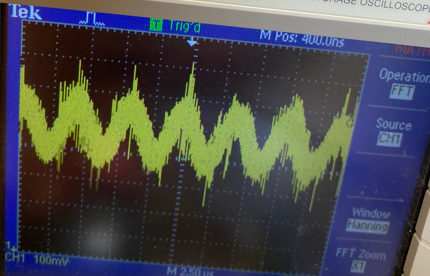I designed this circuit. It is a fully differential amplifier of gain one. I am getting this ringing and noise on the output of tx1_o
Blue is where the probe is and ground is on circuit's ground.
I have put a 100nF cap in series with the measurement point to AC couple the signal into the RFSoC ADC. This is on the leg of the cap that is AC coupled and on the ADC side. (10x probe)
This is measuring on the leg of the cap that has the source signal, the opposite leg of the one depicted above. Still too noisy but spikes are gone on this side. Note: this is the same place of measurement depicted in the 1x probe picture (below is 10x probe).
Here is where I am taking a measurement (this is on the signal generator side):
Path that the signal is taking:
Here is the signal measured at the source tx_loopback or tx0 WITHOUT the ADC connected:
Here is the signal measured at the source tx_loopback or tx0 WITH the ADC connected (it is more attenuated and noisy):
What can I do to remove this ringing and what could be causing it?










